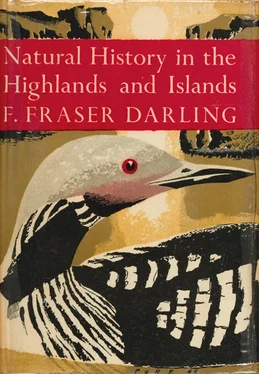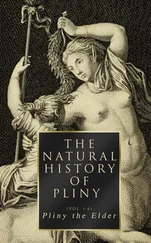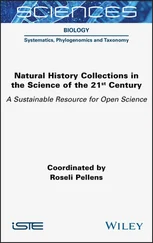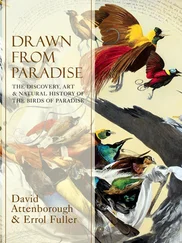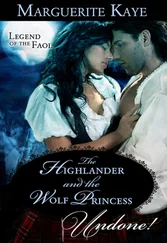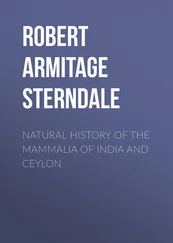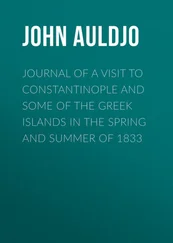The east side of the Outer Isles is entirely different from the populous and spacious west side. Admittedly, north of Stornoway there are the sandy lands of Gress, Coll, Back and Tolsta, and the Eye Peninsula, supporting many crofts, but south of there the land is peat-laden and comes to abrupt cliffs at the sea’s edge. The bird life is nothing like so interesting as on the western side and on such cliffs as exist there. Long arms of the sea, such as Loch Seaforth and Loch Erisort, Loch Maddy and Loch Eport, run far into the interior; indeed, the last two named almost reach the west coast in Uist. To me this east coast of the Hebrides is uninviting and curiously dead. It is my experience that many of the islands off the West Coast of Scotland are much more interesting on their western sides than on their eastern shores. Raasay is an exception.
The east side of Harris from East Loch Tarbert to Rodel is well worth a visit to see what man can do in the shape of difficult cultivation. Take for example the township of Manish where the ground rises at a steep slope from the sea. It is in reality a rough face of rock devoid of soil but holding the peat here and there. The lobster fishers of Manish have actually built the soil of their crofts by creating lazy-beds or feannagan with seaweed and peat. By building up these little patches varying from the size of a small dining-table to an irregular strip of several yards long, the inhabitants have overcome the difficulty of drainage. The women carry seaweed up to the lazy-beds each year, all in creels, for the ground could not be reached by ponies. And all cultivation is of necessity done with the spade. Two crops only are grown, potatoes and oats, and the oats are Avena strigosa , which more than one naturalist has thought to be extinct as a cropping oat and only occurring here and there as a weed. The industry of the people of East Harris and their steadfast persistence with a thousand-year-old style of husbandry are remarkable. The potato is the only new thing, being brought to the Outer Isles in 1752. There are many more primitive townships in the Outer Hebrides working lazy-beds, but none in more disadvantageous position than Manish and its neighbours.
The Outer Isles also have their Atlantic outliers, each little group having its own strong individuality. There is St. Kilda (Plate VIIIa) on the west of the Uists, seventy-four miles out from Lochmaddy via the Sound of Harris; this group of magnificent gabbro architecture has already been mentioned, with the fact that it is the largest gannetry in the British Isles and in the world. It is also the place from which the still growing fulmar population of the British Isles may originally have spread. The islands and their peculiar sub-specific fauna will be described in a later chapter. The Monach Isles are only eight miles west of North Uist, and are likely to follow so many small island groups in becoming uninhabited by man. They are islands of sand caught and built up on reefs of Lewisian gneiss. Another reef to the south of them, Haskeir, has not collected the sand. It is much smaller and uninhabitable but has long been a haunt of the Atlantic seal and was one of the last strongholds before the revival of the species in the present century. The Flannan Isles are twenty-two miles west of Loch Roag, Lewis. They are of gneiss and bounded everywhere by cliffs. The seals feed near them, but of necessity do not breed there because they cannot haul out. The relatively flat tops of the islands are covered with very fine grass which feeds a few sheep. The difficulties of gathering and getting the sheep to and from the boats are likely to be the cause of even this usage being discontinued. The lighthouse is the only inhabited place in the Flannans and to get ashore there can be a ticklish job.
Then to the north and north-east of the Butt of Lewis are Sula Sgeir (Plate XXIIIa) and North Rona (Plate XXIVb), forty and forty-five miles away respectively. There are no beaches on these islands. Their natural history will be described in greater detail in Chapter 10. Suffice it to say here that Sula Sgeir is a gannetry, and like North Rona, St. Kilda and the Flannans, is a station for Leach’s fork-tailed petrel. It is doubtful whether we should be justified in calling Leach’s petrel one of the rarest British birds, but its breeding places are so few and so remote that it is unknown to all but half a dozen naturalists.
We have come to the end of our arm-chair tour of Highland country, from the frontier zone of Perthshire and Angus to that other frontier, the oceanic zone of the Atlantic. I have given but a glimpse of what is without doubt one of the finest scenic and faunistic areas in the world. Whether it survives as such depends very much on the good will and active, participant care of British people. Any area of natural history which is adjacent to a highly populous industrial region is in peril from that very proximity, but there is always the point of view that men’s minds become awakened to natural beauty and the right of wild life to existence for its own sake, and then the proximity may be to the advantage of wild life and the wild places, in the same way that no country sparrows or moorhens are as tame and safe as those of St. James’s Park.
THE HUMAN FACTOR AND REMARKABLE CHANGES IN POPULATIONS OF ANIMALS
IT IS of the very nature of humanity to alter the complex of living things wherever man is found. Man must be considered as part of the natural history of the earth’s surface, however unnatural he may be. Of course, all animals alter the rest of the complex of living things in some way or other, but none does it with reflective intention as man does, and, I might add, none does it with much less regard for consequences. The animal, lacking the power of reflection, is as much at the mercy of its environment as the environment has to endure that particular animal; but man has power quite beyond his own physical strength; he can make the desert bloom, or ultimately fill an oceanic island with the beauty of bird song, and equally he makes deserts as spectacularly as any horde of locusts.
What has man done to the Highlands and Islands and what is he doing? Something of that story will be discussed in this chapter, but not so much as might be desired. Professor James Ritchie, now Regius Professor of Natural History at Edinburgh, has written a large volume entitled The Influence of Man on Animal Life in Scotland. It is an interesting and often depressing story, but Professor Ritchie would probably be the last to suggest that he has told the complete tale. There is much of the story we do not know or are only just learning how to infer and deduce. And our methods of recording are never complete enough to mark down, for future minds to work upon, the doings of the present generation of men.
Scotland, and the Highlands particularly, have nothing like such a long human history as England has. The last glacial epoch prevented that, for Scotland was under the ice thousands of years after man had inhabited the south of England. The tradition apparently established at that time has persisted with remarkable tenacity, because many people still seem to think that the north of Scotland endures arctic conditions in winter—which is a pity, considering the picnics this writer has enjoyed on a New Year’s Day, and the times he has taken his siesta in comfort in the sun on a Highland hill in December and January!
It is generally accepted then that the Highlands as a whole have a human history of but a few thousand years as against tens of thousands in southern England, and it is possible that such areas as West Sutherland and the north-west corner of Ross-shire did not know man until two or three thousand years ago. When man first came to the Highlands the sea was 50 feet higher than it is at present. His kitchen-middens appear near the 50-foot raised beaches in various places such as Colonsay, Mull, Islay and Oban. He was a hunter and fisher and knew no arts of husbandry. One wonders what large effects early man can have had, because a small population of hunters taking life only for its own subsistence, and not for any export, would hardly bring to extinction many of the animals we know were present at that time. It is probable that natural causes were much more important in changing the natural history of the Highlands in those days. A few degrees’ change of temperature for a period of years, for example, whether up or down, would work very great changes in the tree line and the specific constitution of the forests. The mountain tops would appear from the ice or disappear under it again for considerable spells, and everywhere the vital factor of moss growth would be affected. The growth-rate of sphagnum moss under optimum conditions has, in the deduced history of the Highlands, felled forests as surely as the fires and the axes of mankind.
Читать дальше
